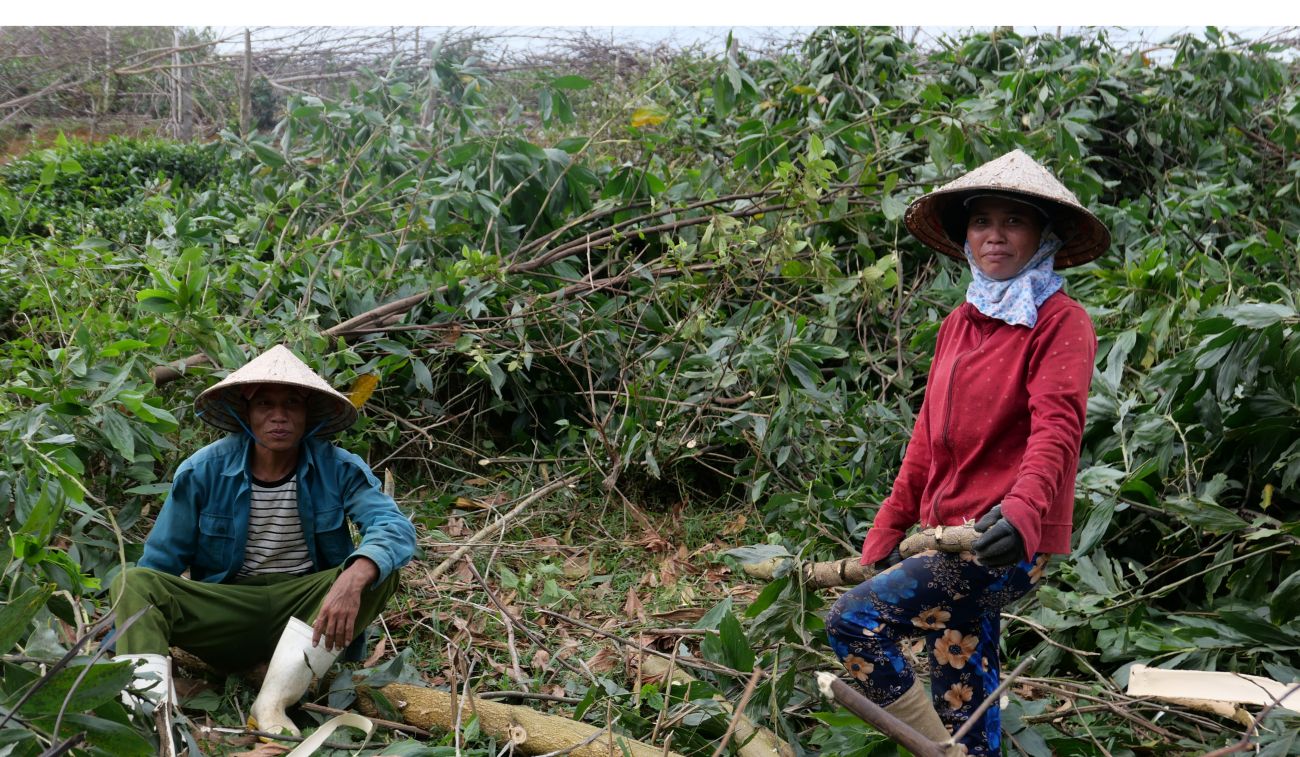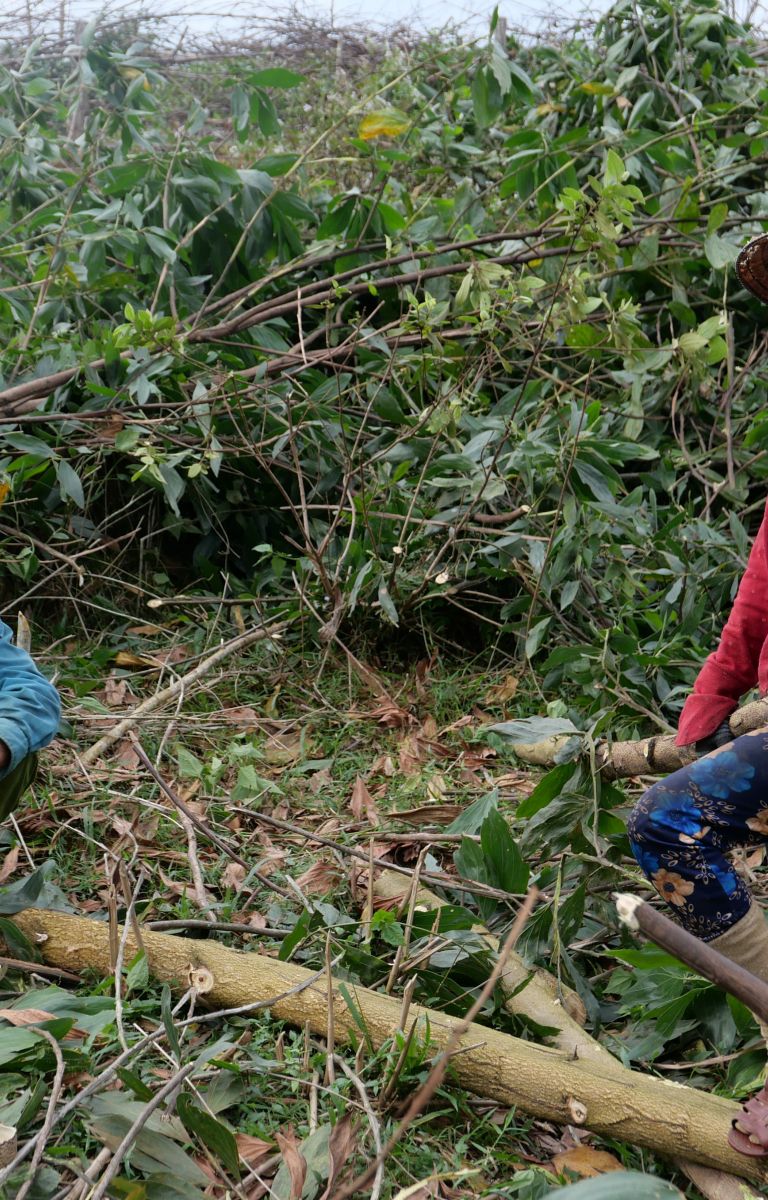

This guide reflects RECOFTC’s more than 30 years of experience in building capacity for community forestry in the Asia-Pacific region. The questions in the guide come from RECOFTC’s discussions with stakeholders in its FLOURISH project in Lao PDR, Thailand and Viet Nam. FLOURISH is an innovative four-year forest landscape restoration (FLR) initiative that uses market forces combined with community forestry to combat climate change, restore degraded forests and improve the well-being of forest communities.
Lok Mani Sapkota and Trang Thu Hoang prepared this guide with the technical support of Gerald Kapp and Simon Benedikter, both at Technische Universität Dresden, and Ronnakorn Triraganon and Jenna Jadin at RECOFTC.
Germany’s Federal Ministry for the Environment, Nature Conservation, and Nuclear Energy (BMU), which funds FLOURISH through the International Climate Initiative (IKI), supported the production of this publication.
References and further reading
A
Appanah, S., Shono, K. and Durst, P.B. 2015. Restoration of forests and degraded lands in Southeast Asia 1. Unasylva 66: 52-63.
B
Beatty, C.R., Cox, N. A., and M. E. Kuzee. 2018. Biodiversity Guidelines for Forest Landscape Restoration Opportunities Assessments. IUCN: Gland, Switzerland.
Besseau, P., Graham, S. and Christophersen, T. (eds.) 2018. Restoring Forests and Landscapes: The Key to a Sustainable Future. Global Partnership on Forest and Landscape Restoration: Vienna, Austria.
Boedhihartono, A.K. and Sayer, J. 2012. Forest Landscape Restoration: Restoring What and for Whom? pp. 309-323 in Forest Landscape Restoration: Integrating Natural and Social Sciences. (eds. J. Stanturf, D. Lamb and P. Madsen). Springer: Dordrecht, Netherlands.
C
Carvalheiro, L.G. et al. 2010. Pollination services decline with distance from natural habitat even in biodiversity‐rich areas. Journal of Applied Ecology 47: 810-820.
Chazdon, R.L. and Guariguata, M.R. 2018. Decision Support Tools for Forest Landscape Restoration: Current Status and Future Outlook. Center for International Forestry Research: Bogor, Indonesia.
Cuc, N. 2015. Mangrove forest restoration in northern Viet Nam. pp. 106-121 in Enhancing food security through forest landscape restoration: Lessons from Burkina Faso, Brazil, Guatemala, Viet Nam, Ghana, Ethiopia and Philippines (eds. C. Kumar et al). IUCN: Gland, Switzerland.
D
Denier, L., et al. 2015. The Little Sustainable Landscapes Book. Global Canopy Programme: Oxford, UK.
E
Elliott, S. et al. 2006. How to Plant a Forest: The Principles and Practice of Restoring Tropical Forests. Biology Department, University of Chiang Mai: Chiang Mai, Thailand.
Elliott, S., Blakesley, D. and Hardwick, K. 2013. Restoring Tropical Forests: A Practical Guide. Royal Botanic Gardens: Kew, UK.
Emborg, J., Walker, G. and Daniels, S. 2012. Forest Landscape Restoration Decision-Making and Conflict Management: Applying Discourse-Based Approaches. pp. 131-153 in Forest Landscape Restoration: Integrating Natural and Social Sciences. (eds. J. Stanturf, D. Lamb and P. Madsen). Springer: Dordrecht, Netherlands.
Erbaugh, J.T. and Oldekop, J.A. 2018. Forest landscape restoration for livelihoods and well-being. Current Opinion in Environmental Sustainability 32: 76-83.
Evans KA and Guariguata MR. 2016. Success from the Ground Up: Participatory Monitoring and Forest Restoration. Center for International Forestry Research: Bogor, Indonesia.
F
FAO. 2015. Global Forest Resources Assessment 2015. Desk Reference. Food and Agriculture Organization of the United Nations: Rome, Italy.
FAO. 2016. How to Mainstream Gender in Forestry: A Practical Field Guide. Food and Agriculture Organization of the United Nations: Rome, Italy.
FAO and Global Mechanism of the UNCCD. 2015. Sustainable Financing for Forest and Landscape Restoration: Opportunities, Challenges and the Way Forward. Food and Agriculture Organization of the United Nations: Rome, Italy.
FAO and RECOFTC. 2015. Mainstreaming Gender into Forest Policies in Asia and the Pacific. FAO/RECOFTC: Bangkok, Thailand.
FAO and RECOFTC. 2016. Forest Landscape Restoration for Asia-Pacific Forests. S. Appanah (ed.). FAO/RECOFTC: Bangkok, Thailand.
G
Gilmour, D.A., San, N.V. and Xiong, T. 2000. Rehabilitation of Degraded Forest Ecosystems in Cambodia, Lao PDR, Thailand and Vietnam: An Overview. IUCN-Asia: Cambridge, UK.
Global Commission on the Economy and Climate. 2014. Better Growth, Better Climate: The New Climate Economy Report. GCEC: Washington, DC.
H
Heiner, K. et al. 2017. Public-Private-Civic Partnerships for Sustainable Landscapes. A Practical Guide for Conveners. EcoAgriculture Partners and IDH, the Sustainable Trade Initiative: Fairfax, Virginia, USA.
I
IUCN. 2017. Gender-Responsive Restoration Guidelines: A Closer Look at Gender in the Restoration Opportunities Assessment Methodology. IUCN: Gland, Switzerland.
IUCN and WRI. 2014. A Guide to the Restoration Opportunities Assessment Methodology (ROAM): Assessing Forest Landscape Restoration Opportunities at the National or Sub-national Level. IUCN and WRI: Gland, Switzerland.
ITTO. 2002. ITTO Guidelines for the Restoration, Management and Rehabilitation of Degraded and Secondary Tropical Forests. ITTO: Yokohama, Japan.
K
Klein, A.M. et al. 2006. Importance of pollinators in changing landscapes for world crops. Proceedings of the Royal Society B: Biological Sciences 274: 303-313.
Kusumanto, T. 2005. Applying a Stakeholder Approach in FLR. ITTO: Yokohama, Japan.
L
Lamb, D., Stanturf, J. and Madsen, P., 2012. What Is Forest Landscape Restoration?. pp 3-23 in Forest Landscape Restoration: Integrating Natural and Social Sciences. (eds. J. Stanturf, D. Lamb and P. Madsen). Springer: Dordrecht, Netherlands.
M
Macqueen, D., et al. 2018. Access to Finance for Forest and Farm Producer Organisations (FFPOs). FAO: Rome, Italy and IIED: London, UK.
Mäder, P. et al. 2002. Soil fertility and biodiversity in organic farming. Science 296: 1694-1697.
Maginnis, S. and Jackson, W. 2005. What is FLR and How Does it Differ from Current Approaches. ITTO: Yokohama, Japan.
Milligan, M.C. et al. 2016. Quantifying pest control services by birds and ants in Kenyan coffee farms. Biological Conservation 194: 58–65. doi:10.1016/j.biocon.2015.11.028
Minnemeyer, S. et al. 2011. A World of Opportunity. World Resources Institute: Washington, DC.
O
Ostrom, E. 1999. Coping with tragedies of the commons. Annual Review of Political Science. 1999.2: 493-535.
Ostrom, E. 2010. Beyond markets and states: Polycentric governance of complex economic systems. American Economic Review 100: 1-33.
R
Raudsepp-Hearne, C., Peterson, G.D. and Bennett, E.M. 2010. Ecosystem service bundles for analyzing tradeoffs in diverse landscapes. Proceedings of the National Academy of Sciences 107: 5242-5247.
RECOFTC. 2013. Gender in REDD+: A Handbook for Grassroots Facilitators — Questions and Answers. RECOFTC: Bangkok, Thailand.
RECOFTC and AWG-SF. 2017. Social Forestry and Climate Change in the ASEAN region: Situational Analysis 2016. RECOFTC: Bangkok, Thailand.
S
Sabogal, C, Besacier, C. and McGuire, D. 2015. Forest and landscape restoration: Concepts, approaches and challenges for implementation. Unasylva 66: 3-10.
Shackelford, G. et al. 2013. Comparison of pollinators and natural enemies: a meta-analysis of landscape and local effects on abundance and richness in crops. Biological Reviews 88: 1002–1021. doi:10.1111/brv.12040.
Sijapati Basnett, B. et al. 2017. Gender Matters in Forest Landscape Restoration: A Framework for Design and Evaluation. Center for International Forestry Research: Bogor, Indonesia.
Stanturf, J; Mansourian, S., and Kleine, M. (eds.). 2017. Implementing Forest Landscape Restoration: A Practitioner’s Guide. IUFRO-SPDC; Vienna, Austria.
V
Verdone, M. 2015. A Cost-Benefit Framework for Analyzing Forest Landscape Restoration Decisions. IUCN: Gland, Switzerland.
W
Wilson, K.A. et al. 2012. The Economics of Restoration. pp. 215-231 in Forest Landscape Restoration: Integrating Natural and Social Sciences. (eds. J. Stanturf, D. Lamb and P. Madsen). Springer: Dordrecht, Netherlands.
WRI. 2015. The Restoration Diagnostic: A Method for Developing Forest Landscape Restoration Strategies by Rapidly Assessing the Status of Key Success Factors. World Resources Institute: Washington DC.
